[コンプリート!] e coli diagram 217849-E coli diagram
Most strains are non pathogenic but a few cause diseases in humans Pathogenic E coli include 4 main subtypes Enteroaggregative E coli cause diarrhea Enterohemorrhagic E coli causes dysentery and hemolytic uremic syndromeIt is a tough and rigid structure of peptidoglycan with accessory specific materials (eg LPS, teichoic acid etc) surrounding the bacterium like a shell and lies external to the cytoplasmic membrane It is 1025 nm in thickness It gives shape to the cell Nucleus The single circular doublestranded chromosome is the bacterial genomeIt is a tough and rigid structure of peptidoglycan with accessory specific materials (eg LPS, teichoic acid etc) surrounding the bacterium like a shell and lies external to the cytoplasmic membrane It is 1025 nm in thickness It gives shape to the cell Nucleus The single circular doublestranded chromosome is the bacterial genome

Extensive Mosaic Structure Revealed By The Complete Genome Sequence Of Uropathogenic Escherichia Coli Pnas
E coli diagram
E coli diagram-(A) Diagram for the simultaneous detection of E coli O157H7 and S typhimurium using AuNRs (B) Ultraviolet/visible (UV/Vis) absorption spectra of aminemodified AuNRs that coupled with two antibodies before and after incubation with varying concentrations of E coli O157H7 and S typhimuriumNormally, E coli cells make very little of any of these three proteins but when lactose is available it, causes a large and coordinated increase in the amount of each enzyme Thus each enzyme is an inducible enzyme and the process is called induction;



When Strains Of E Coli Play Rock Paper Scissors It S Not The Strongest That Survives
Escherichia coli is commonly found in the normal microflora in the human gastrointestinal tract and is intricately involved in the lives of humansThis bacterium can be grown readily, and its genetics are easily manipulated in the laboratory, making it a common workhorse and one of the beststudied prokaryotic model organismsDiagram of e coli A member asked what is esbl e coli?E coli O157 Control of crosscontamination 1 Page Summary Intended audience This guidance is for local authorities and all types of businesses that handle both raw food (that can be a source of harmful bacteria including E coli O157) and readytoeat food
Creative Biolabs provides Escherichia coli (Ecoli) as host to produce recombinant proteinsWith no doubt that Ecoli is the most widely utilized host for heterologous protein expression It dominates the bacterial expression systems For laboratory investigations and initial development in commercial activities, E coli is the preferred system The ability that E coli now can produce mg(A) Diagram for the simultaneous detection of E coli O157H7 and S typhimurium using AuNRs (B) Ultraviolet/visible (UV/Vis) absorption spectra of aminemodified AuNRs that coupled with two antibodies before and after incubation with varying concentrations of E coli O157H7 and S typhimuriumE coli The shake flask holders in the shaker are attached to an orbital plate that rotates horizontally at a programmable rate This shaking motion has two purposes • Keep the cells and the nutrients in the growth media homogeneous • Increases the rate of oxygen uptake by the media for the aerobic E coli cells The cells are
E coli is described as a Gramnegative bacterium This is because they stain negative using the Gram stain The Gram stain is a differential technique that is commonly used for the purposes of classifying bacteriaE coli is normal commensal of lower GI tract ;Ability to produce A/E lesions has also been detected in strains of Shiga toxin–producing E coli (enterohemorrhagic E coli EHEC) and in strains of other bacterial species (1) Figure 2 Diagram of the main genes of the locus of enterocyte effacement (LEE) region and the enteropathogenic Escherichia coli (EPEC) adherence factor (EAF) plasmid


E Coli Chemotaxis



Sources Of E Coli About E Coli
Illustration about Escherichia coli bacteria structure diagram vector illustration E coli info graphic Illustration of medical, diagram, healthyEscherichia coli (abbreviated as E coli) are bacteria found in the environment, foods, and intestines of people and animalsE coli are a large and diverse group of bacteria Although most strains of E coli are harmless, others can make you sick Some kinds of E coli can cause diarrhea, while others cause urinary tract infections, respiratory illness and pneumonia, and other illnessesMost Escherichia coli strains in the human intestine are harmless However, enterohemorrhagic E coli (EHEC) is a foodborne pathogen that causes intestinal disease in humans Conventionally reared (CONV) mice are inconsistent models for human infections with EHEC because they are often resistant to E coli colonization, in part due to their gastrointestinal (GI) microbiota



Extensive Mosaic Structure Revealed By The Complete Genome Sequence Of Uropathogenic Escherichia Coli Pnas


5 Dead 197 Ill With E Coli From Romaine Lettuce Grown In Yuma Region Fda Still Investigating Kawc
E coli is a gram negative, facultative anaerobic, rod shaped bacteria ;Entamoeba coli E coli cysts in concentrated wet mounts Cysts of Entamoeba coli are usually spherical but may be elongated and measure 10–35 µm Mature cysts typically have 8 nuclei but may have as many as 16 or more Entamoeba coli is the only Entamoeba species found in humans that has more than four nuclei in the cyst stage The nuclei may be seen in unstained as well as stained(A) Schematic diagram for the genetic organization of T4P loci from E coli strain BCE049 and Salmonella enterica strain Ty2 The identity and similarity of amino acid sequences for each gene in T4P loci are shown



Replication And Segregation Of An Escherichia Coli Chromosome With Two Replication Origins Pnas


A Identify The Selectable Markers In The Diagram Of E Coli Vector Shown Above Sarthaks Econnect Largest Online Education Community
Overview Escherichia coli (E coli) is a bacterium that is commonly found in the gut of humans and warmblooded animalsMost strains of E coli are harmless Some strains however, such as Shiga toxinproducing E coli (STEC), can cause severe foodborne disease It is transmitted to humans primarily through consumption of contaminated foods, such as raw or undercooked ground meat products, rawE coli is a gram negative, facultative anaerobic, rod shaped bacteria ;Dr Gurmukh Singh answered 49 years experience Pathology Drug resistant bug Extendedspectrum betalactamase (esbl)producing escherichia coli are more dangerous than other e coli and cause more serious infections


2 2 Prokaryotic Cells Bioninja
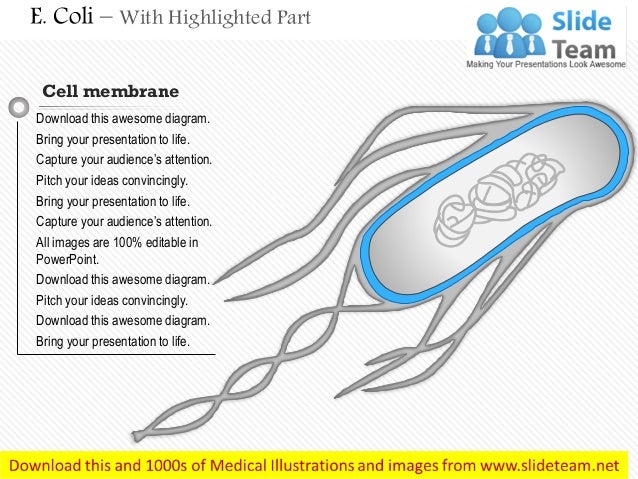


E Coli Medical Images For Power Point
Discuss or draw a labeled diagram to show the ultrastructure of Escherichia coli Use the editor to format your answer Question 2 Why can two water molecules stick to each other?The E coli bacteria that colonize in the lower intestine by adhering to the intestinal lumen also check the establishment and growth of pathogenic bacteria within the intestine However, some strains of E coli are also capable of causing deadly health problems such as severe stomach upsets characterized by cramps and belly pain, vomiting andEntamoeba coli E coli cysts in concentrated wet mounts Cysts of Entamoeba coli are usually spherical but may be elongated and measure 10–35 µm Mature cysts typically have 8 nuclei but may have as many as 16 or more Entamoeba coli is the only Entamoeba species found in humans that has more than four nuclei in the cyst stage The nuclei may be seen in unstained as well as stained



E Coli Diagram Quizlet
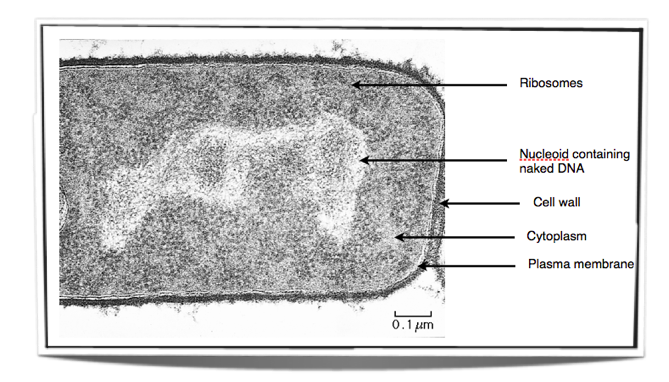


Ib Biology Notes 2 2 Prokaryotic Cells
E coli definition, a species of rodshaped, facultatively anaerobic bacteria in the large intestine of humans and other animals, sometimes pathogenic See moreIA exam 3 Learn with flashcards, games, and more — for freeE coli is a Gramnegative rodshaped bacteria, which possesses adhesive fimbriae and a cell wall that consists of an outer membrane containing lipopolysaccharides, a periplasmic space with a peptidoglycan layer, and an inner, cytoplasmic membrane Some strains are piliated and capable of accepting and transferring plasmid to and from other



Escherichia Coli As A Model Organism And Its Application In Biotechnology Intechopen
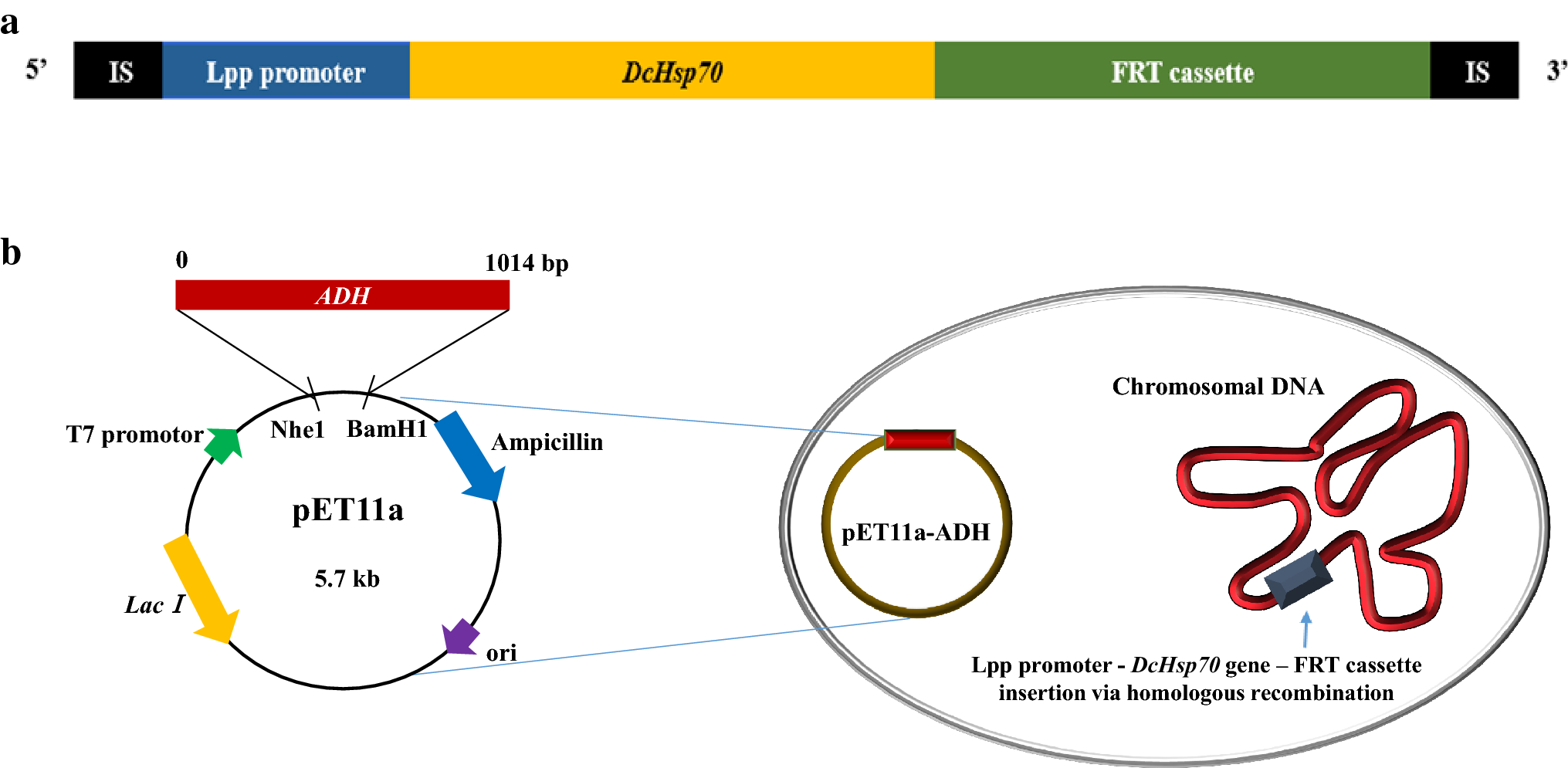


Figure 1 Enhanced Production Of Recombinant Alcohol Dehydrogenase Using The Genetically Engineered Escherichia Coli Strain That Heterologously Expresses Carrot Heat Shock Protein 70 Springerlink
LargeScale Fermentation of E Coli for the Production of HighPurity Isoprene Abstract We present a process for the production of isoprene via the fermentation of glucose Based on our current specifications, we conclude that the use of recombinant Ecoli for the fermentation of glucose is a novel yet unprofitable ventureNanomaterials (NMs) including metals, metal oxides, and quantum dots are increasingly used for developing various materials of industrial use Conventional NM synthesis by chemical and physical methods requires rather harsh and environmentally hazardous conditions Here we report biosynthesis of various NMs by employing a recombinant Escherichia coli strain coexpressing metallothionein andABSTRACT Escherichia coli encounter numerous different stresses during their growth, survival, and infection These stresses are relevant to survival in foods and food processing environments E coli and other bacteria respond to stress conditions by activating small or large groups of genes under the control of common regulator proteins Stress conditions result in the accumulation of these
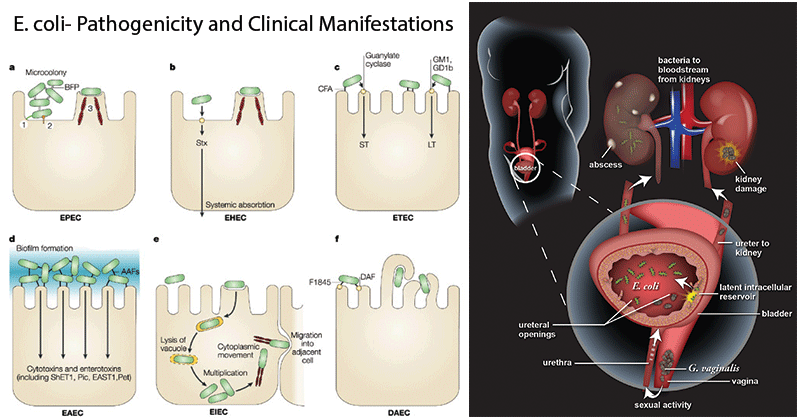


Escherichia Coli E Coli An Overview Microbe Notes
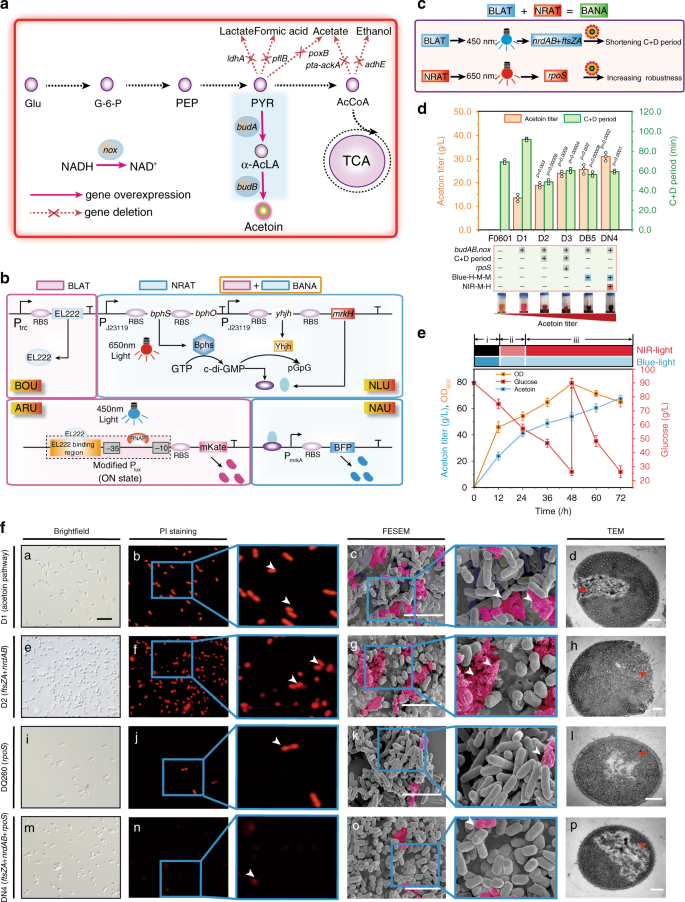


Light Powered Escherichia Coli Cell Division For Chemical Production Nature Communications
The growth of an E coli colony over time Credit WikiCommons CCBY SA 40 The Role Of E coli In The Human Body And Disease Most strains of E coli are actually completely harmless to humans In fact, colonies of E coli form a natural part of the microbiome of the mammalian gut In mammals, E coli facilitates the absorption of iron via the production of enterobactin, a siderophore (GreekEscherichia coli (E coli) is a bacteria that normally lives in the intestines of both healthy people and animals In most cases, this bacteria is harmless It helps digest the food you eat However, certain strains of E coli can cause symptoms including diarrheaEscherichia coli (E coli) are a group of gramnegative bacteria that normally reside in the intestine of healthy people, but some strains can cause infection in the digestive tract, urinary tract, or many other parts of the body



2 2 Prokaryotic Cells Contents 1 Assessment Statements 2 Lecture Notes 3 Slide Show 4 On Line Resources 5 Reference Sites Assessment Statements Assessment Statement Obj Teacher S Notes 2 2 1 Draw And Label A Diagram Of The Ultrastructure Of
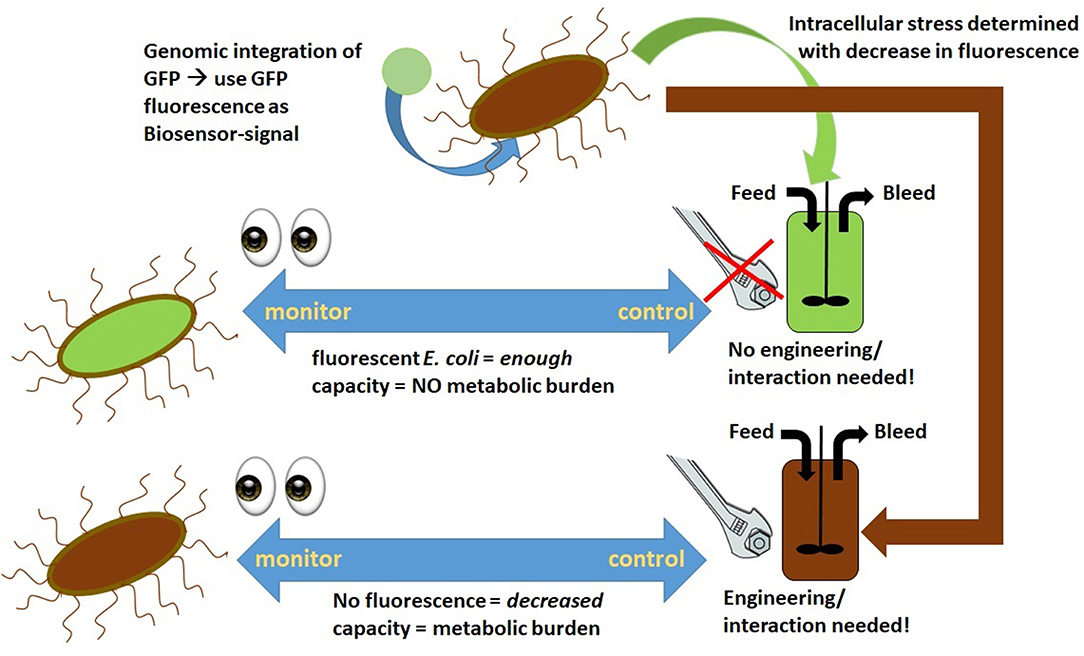


Frontiers The Rocky Road From Fed Batch To Continuous Processing With E Coli Bioengineering And Biotechnology
Computer artwork ribbon diagram of Shiga toxin type 2 (Stx2) from Escherichia coli O157 Shiga toxin is produced by enterohaemorrhagic E coli (EHEC), a dangerous form of the normally harmless E coli bacteria which live in the human intestineE coli Reference Center About the Center It is the largest repository for E coli strains in America It holds more than 85,000 strains collected over the last 50 years from animals, humans, birds and environment Characteristics of each strain are well documented in our database and can be retrieved easilyLargeScale Fermentation of E Coli for the Production of HighPurity Isoprene Abstract We present a process for the production of isoprene via the fermentation of glucose Based on our current specifications, we conclude that the use of recombinant Ecoli for the fermentation of glucose is a novel yet unprofitable venture
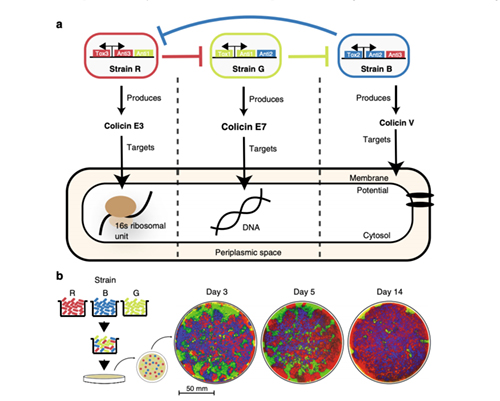


When Strains Of E Coli Play Rock Paper Scissors It S Not The Strongest That Survives



Style Medical 3 Biology 1 Piece Powerpoint Presentation Diagram Infographic Slide Powerpoint Slides Diagrams Themes For Ppt Presentations Graphic Ideas
Bundleforming pili allow for binding to intestinal cells, leading to formation of microcolonies intimin regulates intimate adherence T3SS injects effector proteins into cells to form attaching and effacing lesionsEscherichia coli DH10B was designed for the propagation of large insert DNA library clones It is used extensively, taking advantage of properties such as high DNA transformation efficiency and maintenance of large plasmids The strain was constructed by serial genetic recombination steps, but the underlying sequence changes remained unverifiedNanomaterials (NMs) including metals, metal oxides, and quantum dots are increasingly used for developing various materials of industrial use Conventional NM synthesis by chemical and physical methods requires rather harsh and environmentally hazardous conditions Here we report biosynthesis of various NMs by employing a recombinant Escherichia coli strain coexpressing metallothionein and



Ecocyc Encyclopedia Of E Coli Genes And Metabolism
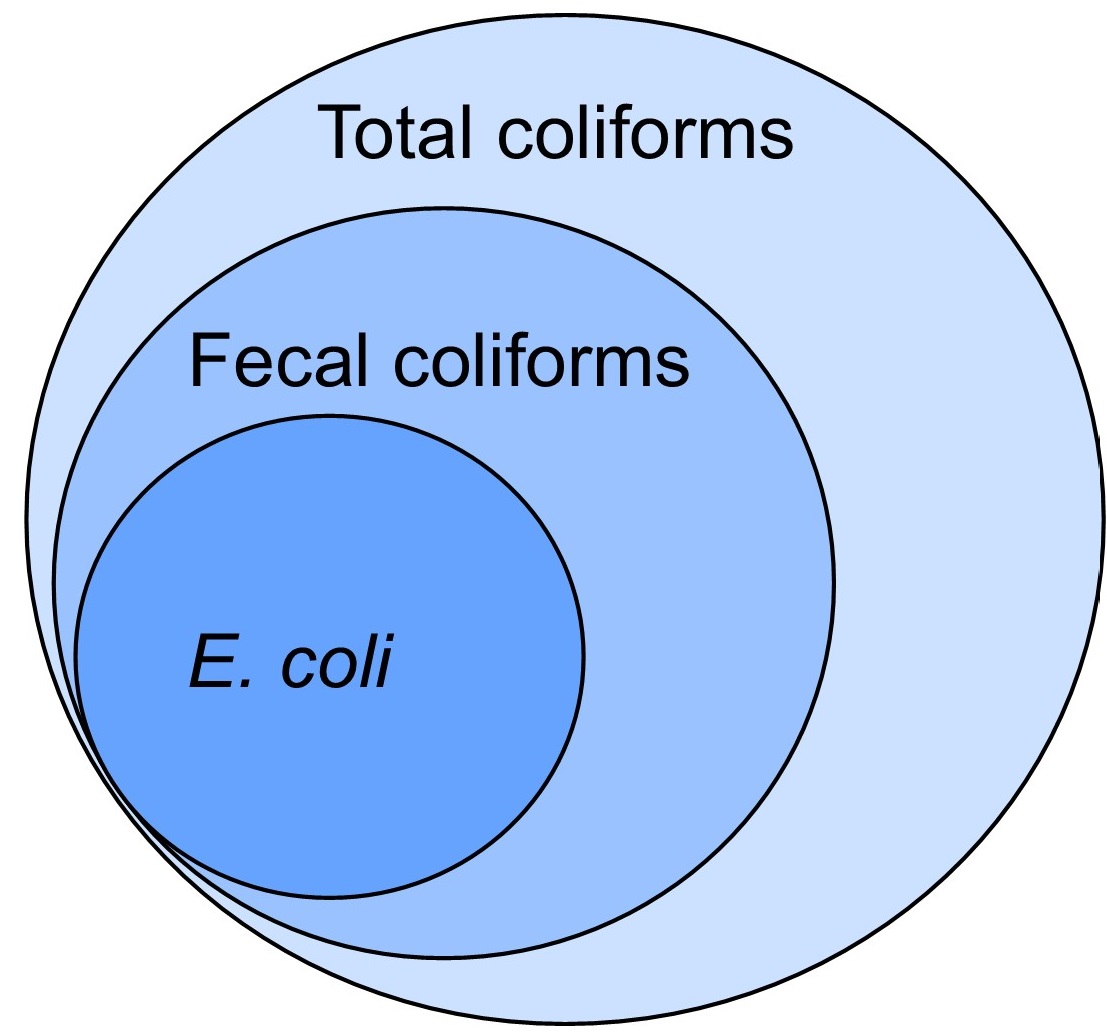


Maine Dwp Total Coliform
Illustration about Escherichia coli bacteria structure diagram vector illustration E coli info graphic Illustration of medical, diagram, healthyEscherichia coli (/ ˌ ɛ ʃ ə ˈ r ɪ k i ə ˈ k oʊ l aɪ /), also known as E coli (/ ˌ iː ˈ k oʊ l aɪ /), is a Gramnegative, facultative anaerobic, rodshaped, coliform bacterium of the genus Escherichia that is commonly found in the lower intestine of warmblooded organisms (endotherms) Most E coli strains are harmless, but some serotypes (EPEC, ETEC etc) can cause serious foodWhat kind of intermolecular chemical bond is this?



E Coli Cell Arrangement Page 1 Line 17qq Com



When Strains Of E Coli Play Rock Paper Scissors It S Not The Strongest That Survives
E coli is normal commensal of lower GI tract ;Use the editor to format your answerThe mechanism is that the few molecules of ßgalactosidase in the cell before induction convert the lactose to allolactose which then turns



E Coli Bacteria Micro Biological Vector Illustration Cross Section Labeled Diagram Medical Research Information Poster Canvas Print Barewalls Posters Prints Bwc
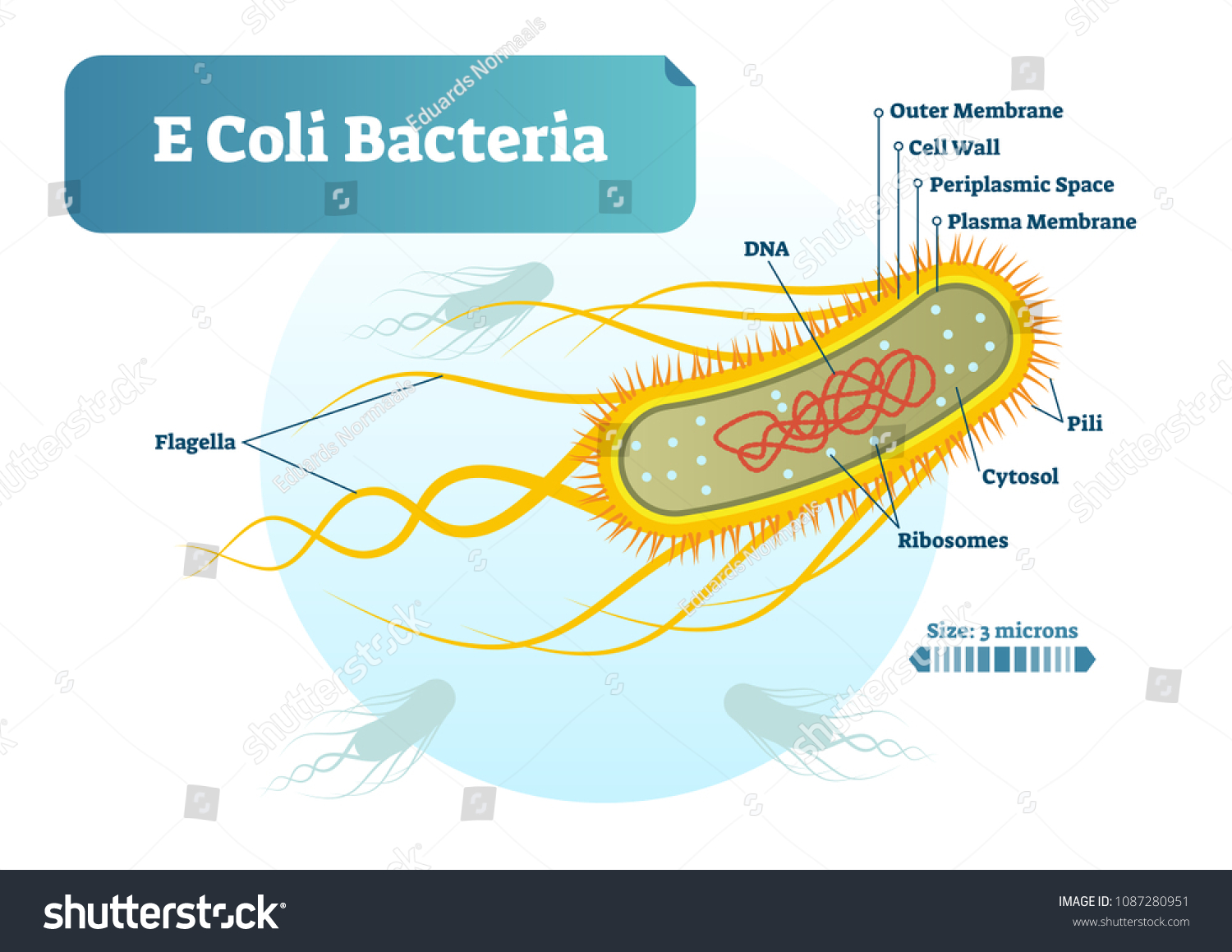


E Coli Bacteria Micro Biological Vector Stock Vector Royalty Free
This type of UTI is usually caused by Escherichia coli (E coli), a type of bacteria commonly found in the gastrointestinal (GI) tract However, sometimes other bacteria are responsible Sexual intercourse may lead to cystitis, but you don't have to be sexually active to develop itEscherichia coli (abbreviated as E coli) are bacteria found in the environment, foods, and intestines of people and animalsE coli are a large and diverse group of bacteria Although most strains of E coli are harmless, others can make you sick Some kinds of E coli can cause diarrhea, while others cause urinary tract infections, respiratory illness and pneumonia, and other illnessesEscherichia coli (E coli) is a bacterium commonly found in the gut of warmblooded organisms Most strains of E coli are not harmful but are part of the healthful bacterial flora in the human gut


Evo Ed E Coli Cell Biology


Programming For Lovers Chapter 1 Phillip Compeau
E Coli can also go through a second process of reproduction known as conjugation Conjugation is a reproduction process which involves the transferring of genetic material by the sex pili between two bacteria Chiefly, one has to take in consideration that this is not a sexual reproduction because there is no combination of in the gametesE coli is a Gramnegative rodshaped bacteria, which possesses adhesive fimbriae and a cell wall that consists of an outer membrane containing lipopolysaccharides, a periplasmic space with a peptidoglycan layer, and an inner, cytoplasmic membrane Some strains are piliated and capable of accepting and transferring plasmid to and from otherEColi phage T7 DNA replicates as a linear molecule The origin is located 17% of the total distance from the left end of the molecule and replication is bidirectional Initially, there is a single replication bubble (moleculeI), and when the leftward fork reaches the terminus, the molecules assume a "Y"form (moleculeIII)



Escherichia Coli Osmosis
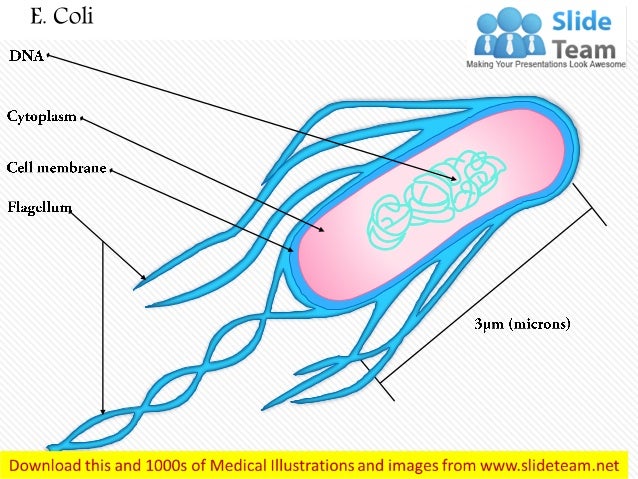


E Coli Medical Images For Power Point
E coli Reference Center;E coli is described as a Gramnegative bacterium This is because they stain negative using the Gram stain The Gram stain is a differential technique that is commonly used for the purposes of classifying bacteriaE coli O157 Control of crosscontamination 1 Page Summary Intended audience This guidance is for local authorities and all types of businesses that handle both raw food (that can be a source of harmful bacteria including E coli O157) and readytoeat food


Q Tbn And9gcssys1v3hy8nyj Qrc9x8ep8al2vwxrgen4kzbdx1 I2bdxw3rn Usqp Cau



Ultrastructure Of E Coli Typical Prokaryotic Cell Ib Biology Diagram Quizlet
E coli are rodshaped bacterium that has an outer membrane consisting of lipopolysaccharides, inner cytoplasmic membrane, peptidoglycan layer, and an inner, cytoplasmic membrane Cell wall this structure is made of a thick layer of protein and sugar that prevents the cell from burstingE coli B derivative This is a descendant of Ecoli B, cured of a defective prophage found in the wildtype (Δ46) The malK, lamB, malM region was transduced in from Ecoli K12 References Wood, WB 1966 Host specificity of DNA produced by Escherichia coli bacterial mutations affecting the restriction and modification of DNA JMolEscherichia coli (E coli) is a bacterium commonly found in the gut of warmblooded organisms Most strains of E coli are not harmful but are part of the healthful bacterial flora in the human gut



Origins Of The E Coli Strain Causing An Outbreak Of Hemolytic Uremic Syndrome In Germany Nejm


Q Tbn And9gctsfnvvfl06kiqzjd5jmxi6arn9pbpth3pbuwn6guln F0zlzzr Usqp Cau
Most strains are non pathogenic but a few cause diseases in humans Pathogenic E coli include 4 main subtypes Enteroaggregative E coli cause diarrhea Enterohemorrhagic E coli causes dysentery and hemolytic uremic syndrome



Preventing E Coli Infection About E Coli
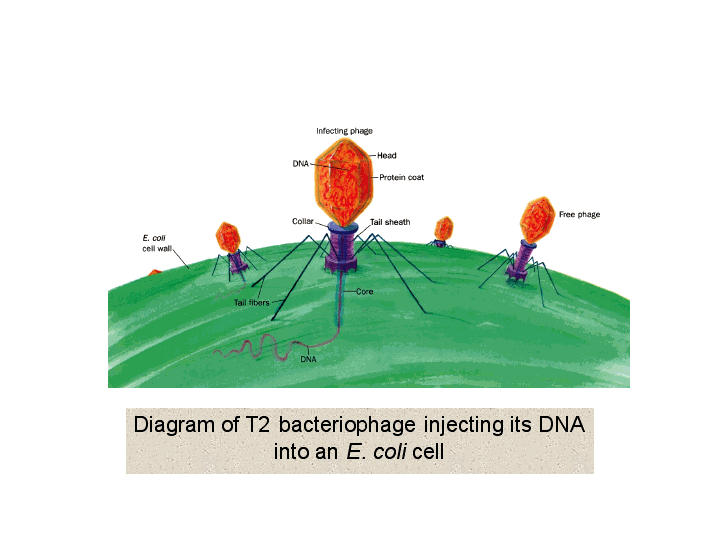


Diagram Of T2 Bacteriophage Injecting Its Dna Into An E Coli Cell
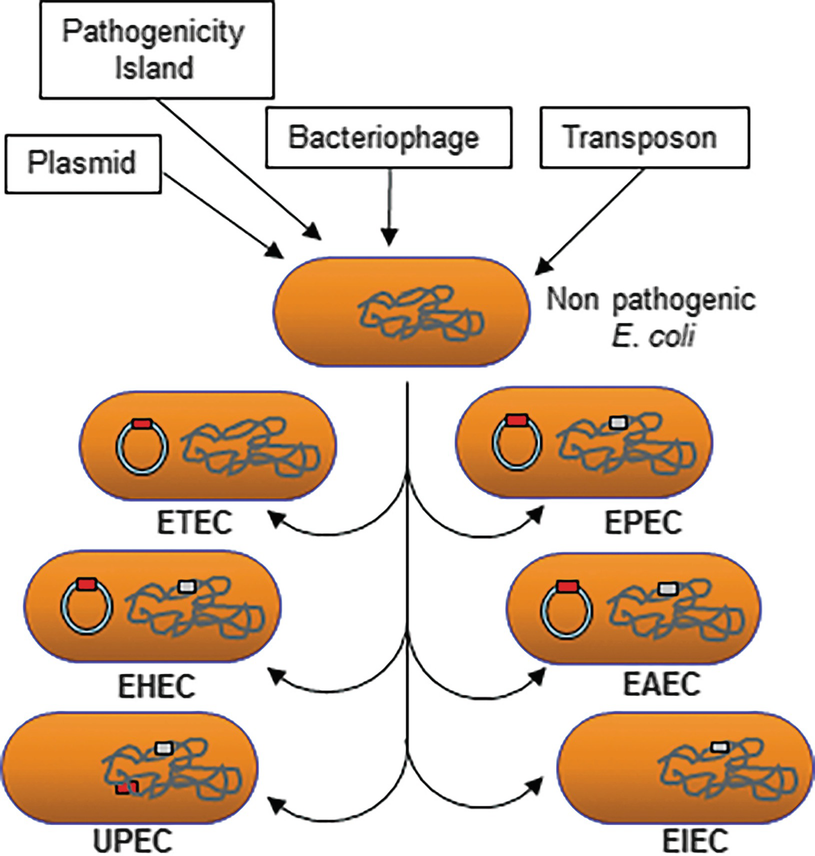


Escherichia Coli Springerlink



3 Escherichia Coli Abb E Coli Bacteria Download Scientific Diagram



Mouse Models Of Escherichia Coli O157 H7 Infection And Shiga Toxin Injection
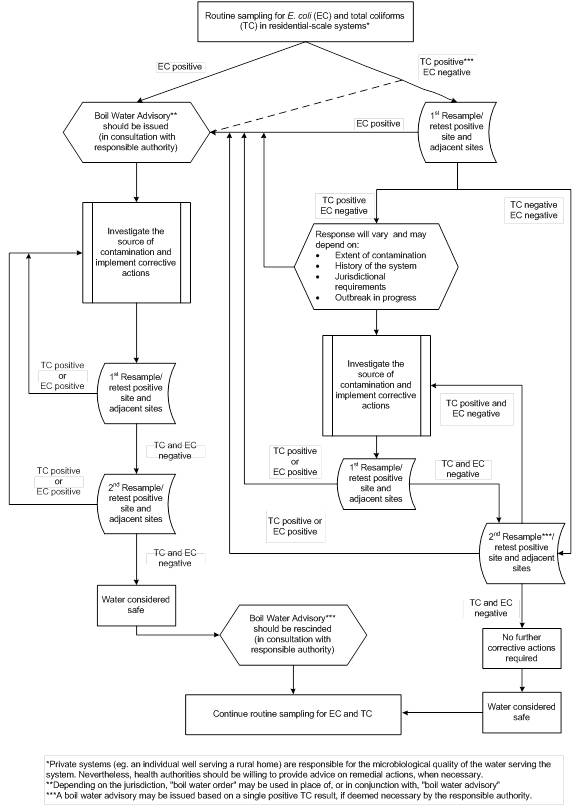


Escherichia Coli In Drinking Water Canada Ca
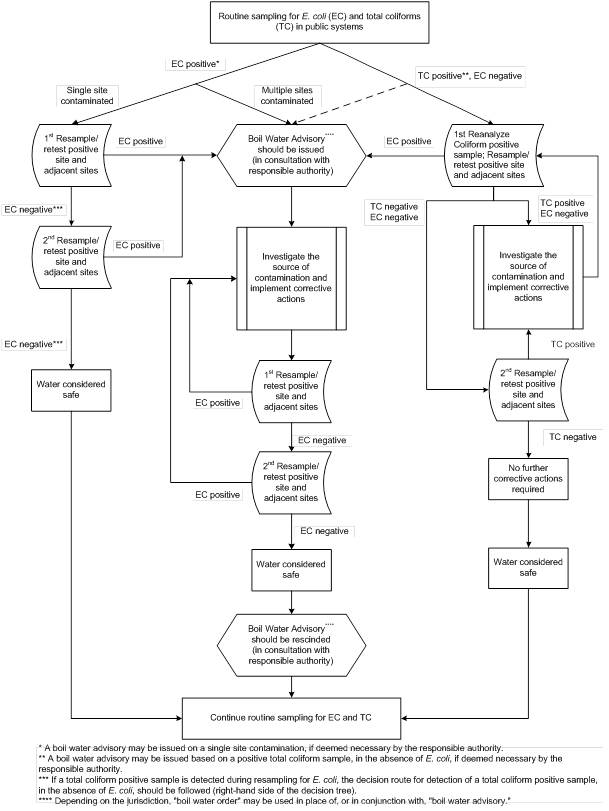


Escherichia Coli In Drinking Water Canada Ca



Ib Biology 2 2 1 How To Draw E Coli Youtube
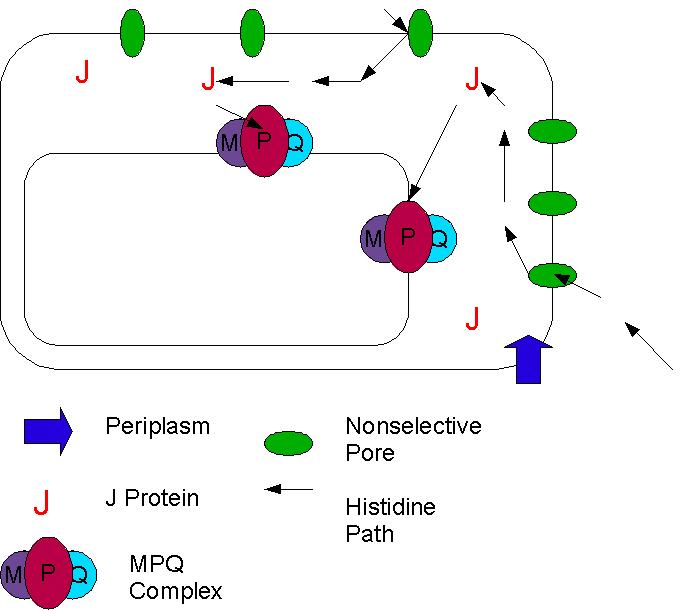


File E Coli His Diagram Jpg Wikiversity
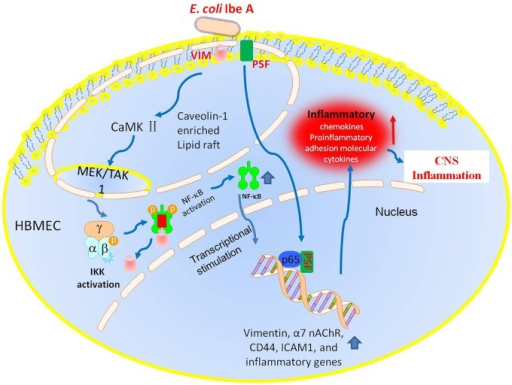


A Schematic Diagram Of The Vim Signaling Model E Coli Open I



Concurrent Processes Set E Coli Cell Division Science Advances
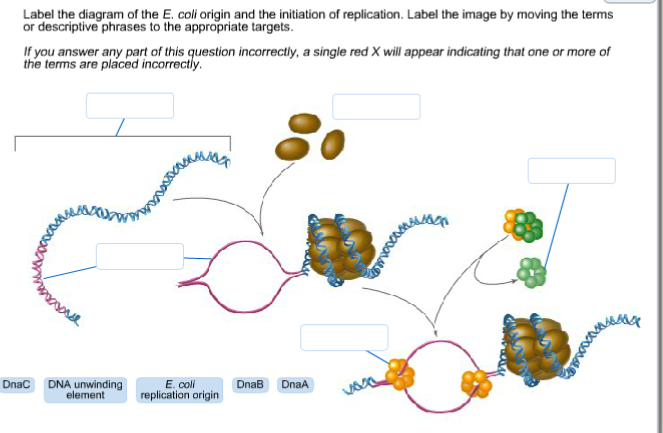


Solved Label The Diagram Of The E Coli Origin And The In Chegg Com
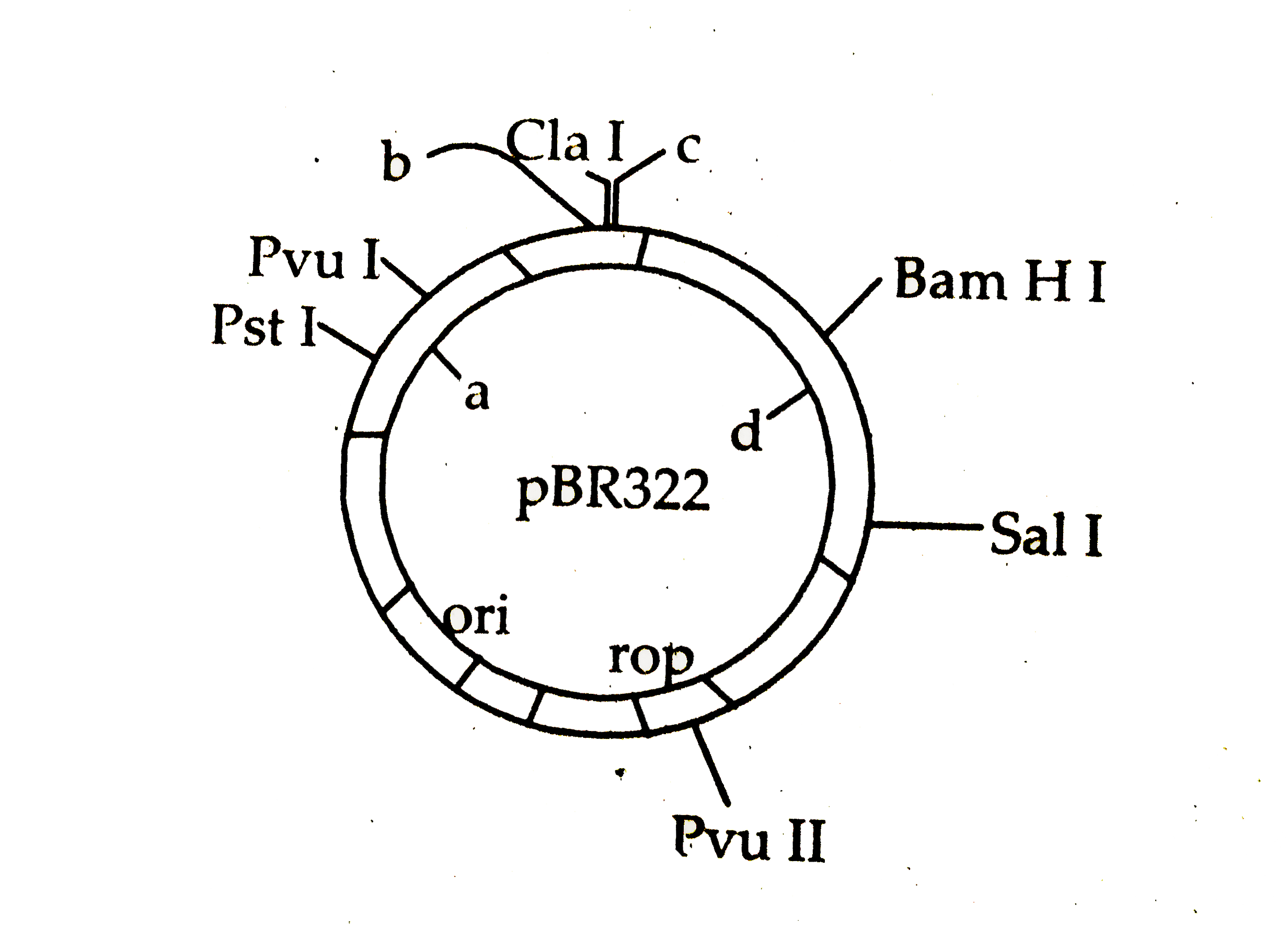


A Identify The Selectable Markers In The Diagram Of E Coli Vector



Magic Cell Free Protein Expression In E Coli Lysate Creative Biolabs
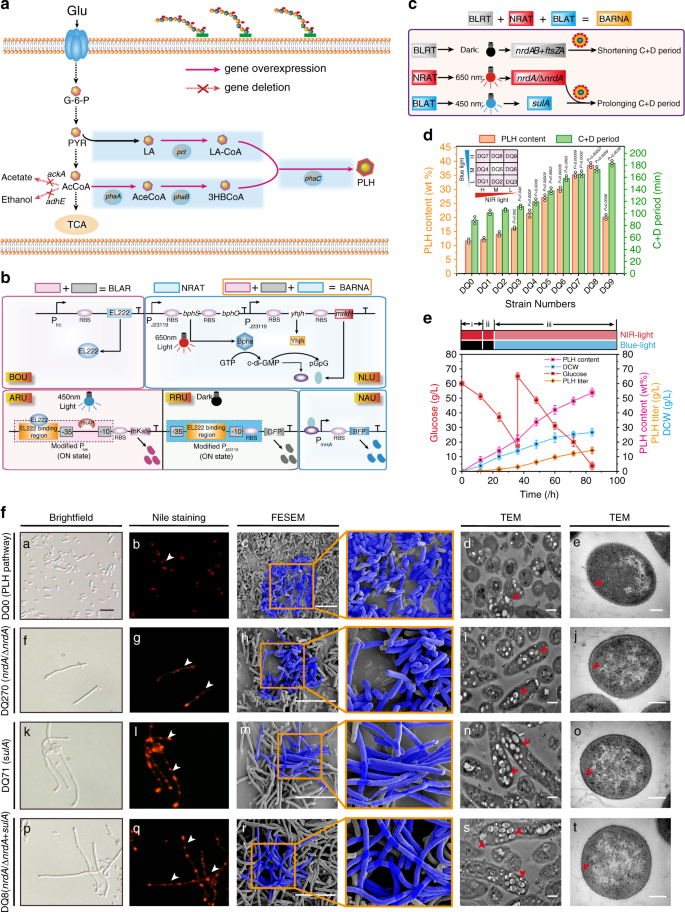


Light Powered Escherichia Coli Cell Division For Chemical Production Nature Communications
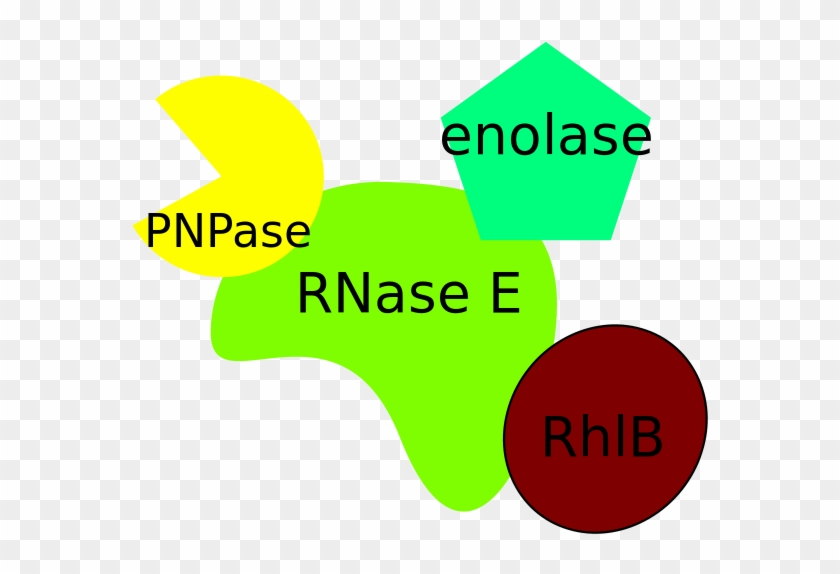


Degradosome From Escherichia Coli Diagram Free Transparent Png Clipart Images Download
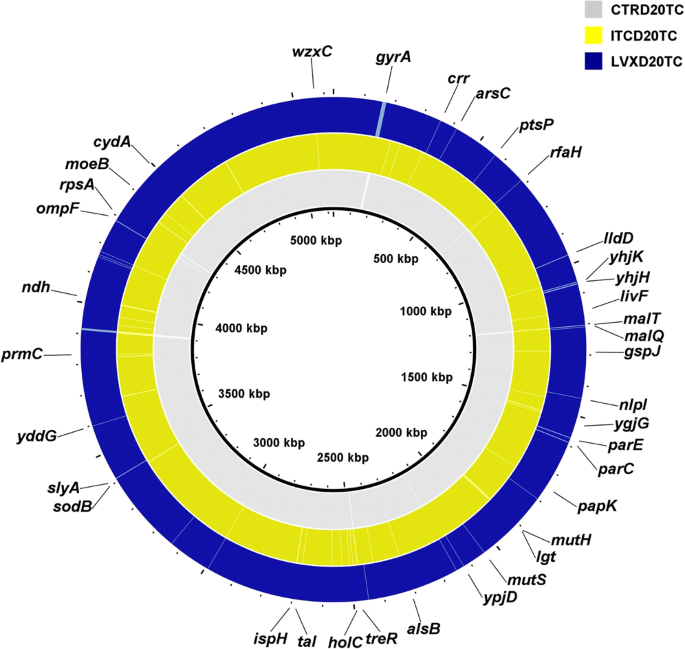


Continuous Culture Of Escherichia Coli Under Selective Pressure By A Novel Antimicrobial Complex Does Not Result In Development Of Resistance Scientific Reports


Q Tbn And9gcqksoeyhk0r7phnhaimry3xpw1noc8z1ifj7d7yysogp61j 26c Usqp Cau


Ib Biology Topic 2 2 Prokaryotic Cells
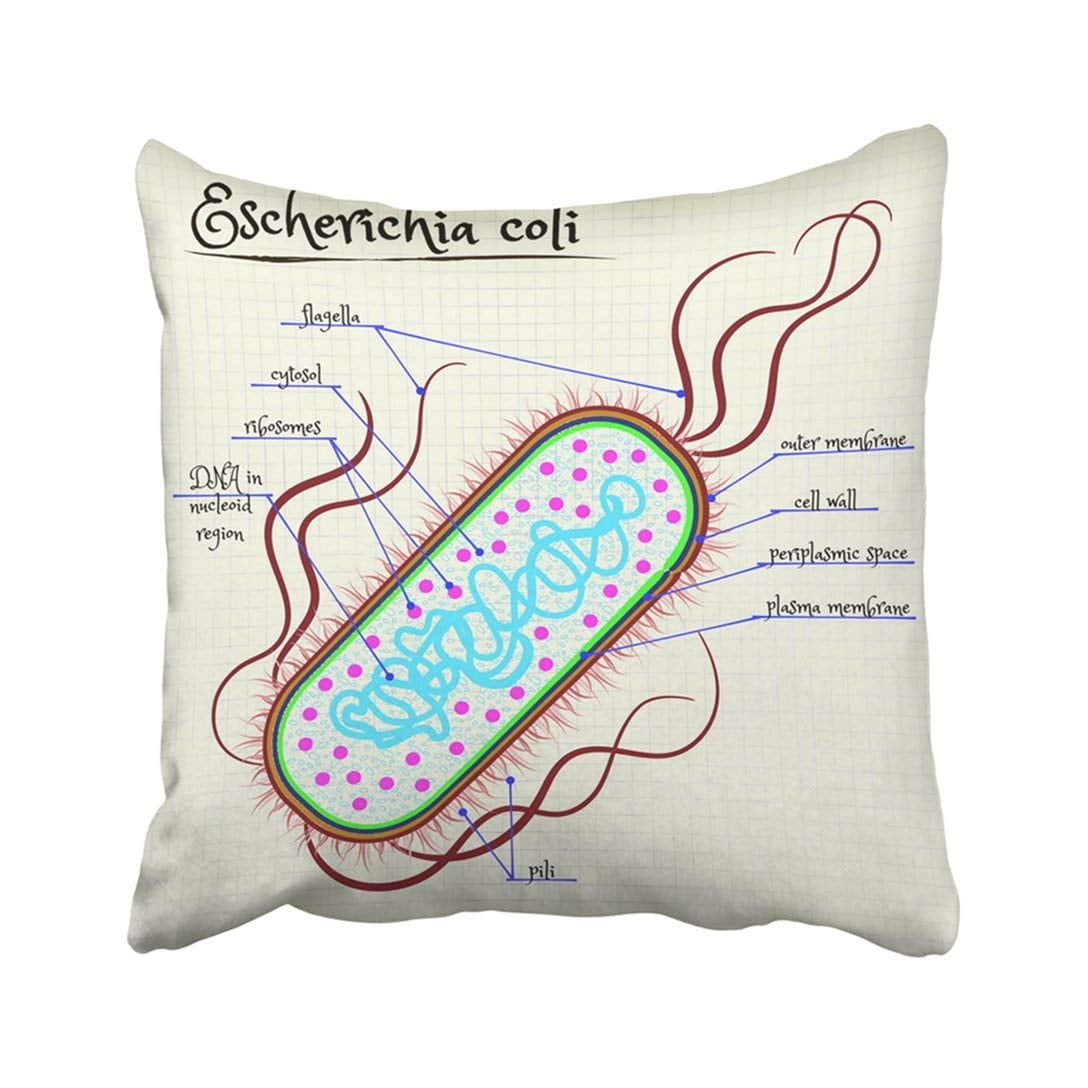


Bpbop Colorful Chart Drawing Of The Structure Escherichia Coli Color Diagram Dna Education Pillowcase Throw Pillow Cover Case 16x16 Inches Walmart Com Walmart Com


Q Tbn And9gctffwwm42evo5c26svvkxccrastvfjru302ru 63nxjqythb6cl Usqp Cau


E Coli Annotation Clip Art Library



Solved Below Is A Diagram Of Dna Replication As Currently Chegg Com



Lab Evolved E Coli Consume Carbon Dioxide The Scientist Magazine



Determining The Best Method To Detect E Coli Starfish Medical
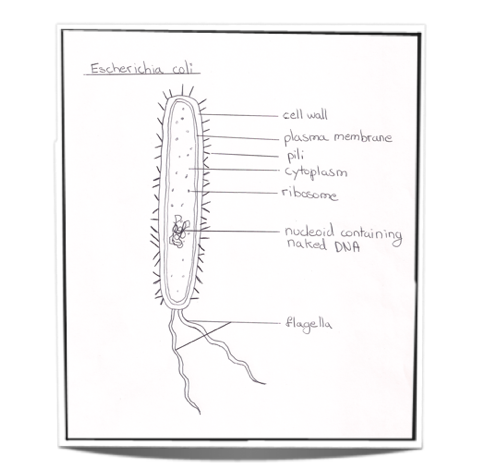


Ib Biology Notes 2 2 Prokaryotic Cells



Vector Clipart E Coli Bacteria Micro Biological Vector Illustration Cross Section Labeled Diagram Medical Research Information Poster Vector Illustration Gg Gograph



E Coli Bacteria Micro Biological Vector Illustration Cross Section Labeled Diagram Medical Research Information Poster Clip Art K Fotosearch
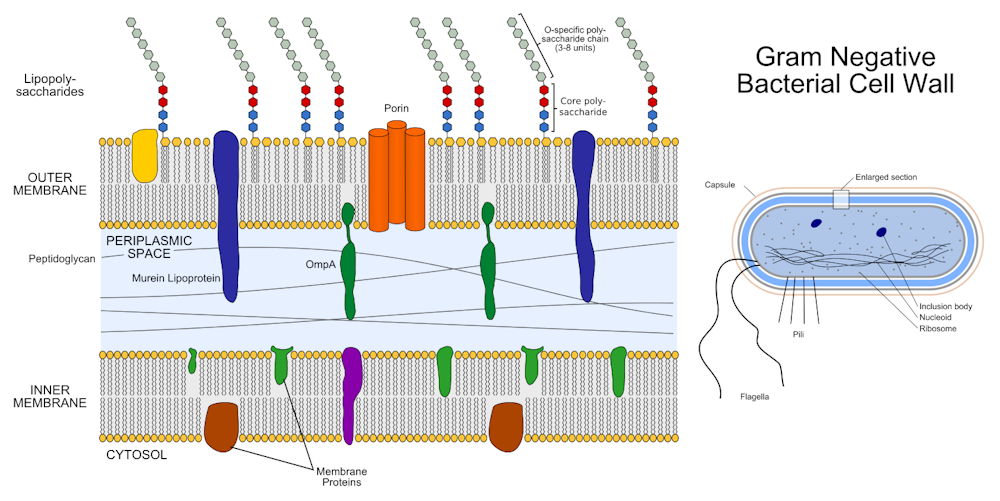


Why Are Some E Coli Deadly While Others Live Peacefully Within Our Bodies



Escherichia Coli Adhesins And Harboring Motile Structures Download Scientific Diagram



Electron Transport Chain Of Bacteria With Diagram
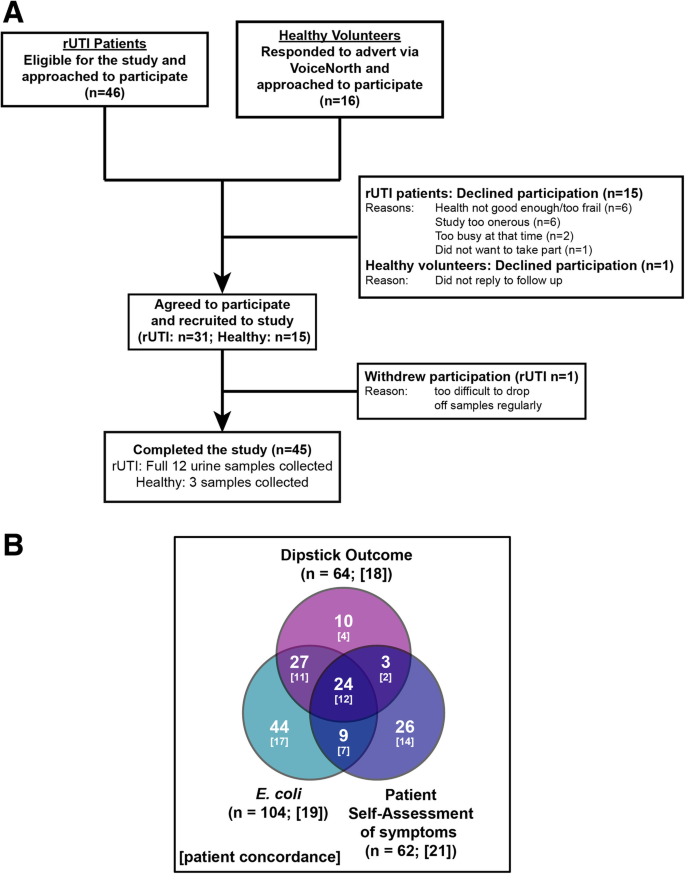


Elevated Urine Il 10 Concentrations Associate With Escherichia Coli Persistence In Older Patients Susceptible To Recurrent Urinary Tract Infections Immunity Ageing Full Text



Style Medical 3 Microbiology 1 Piece Powerpoint Presentation Diagram Infographic Slide Presentation Powerpoint Images Example Of Ppt Presentation Ppt Slide Layouts


Pathogenesis Ecl The Escherichia Coli Laboratory



High Resolution Mapping Of The Escherichia Coli Chromosome Reveals Positions Of High And Low Transcription Cell Systems



3 E Coli High Res Illustrations Getty Images



Ultrastructure Of Escherichia Coli E Coli Diagram Quizlet



Addgene E Coli Rapid Plasmid



Bacteria In Austin Streams October 14 Austintexas Gov



Escherichia Coli Wikipedia



Schematic Diagram Of Autophagy Inhibition By E Coli O157 H7 Adhesion Download Scientific Diagram


Team Gaston Day School Demonstrate 17 Igem Org
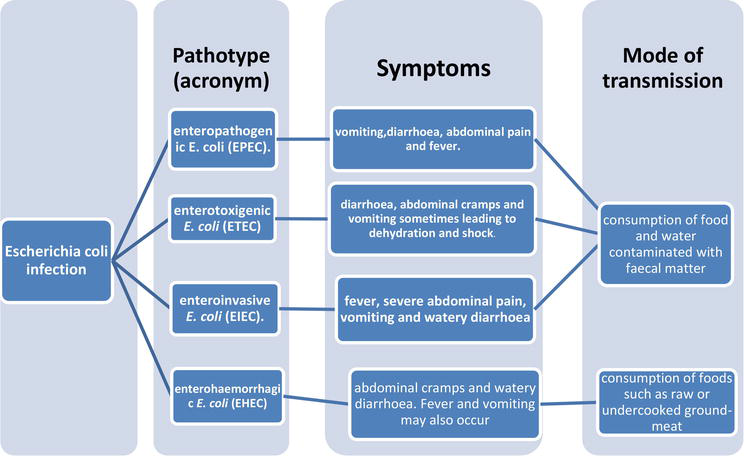


Fast Detection Of Pathogenic Escherichia Coli From Chicken Meats Intechopen


Http Blog Pcmbtoday Com Wp Content Uploads 18 12 10 Pdf



Schematic Diagram Of The Position Of Deleted Genes From The E Coli Genome Image Eurekalert Science News
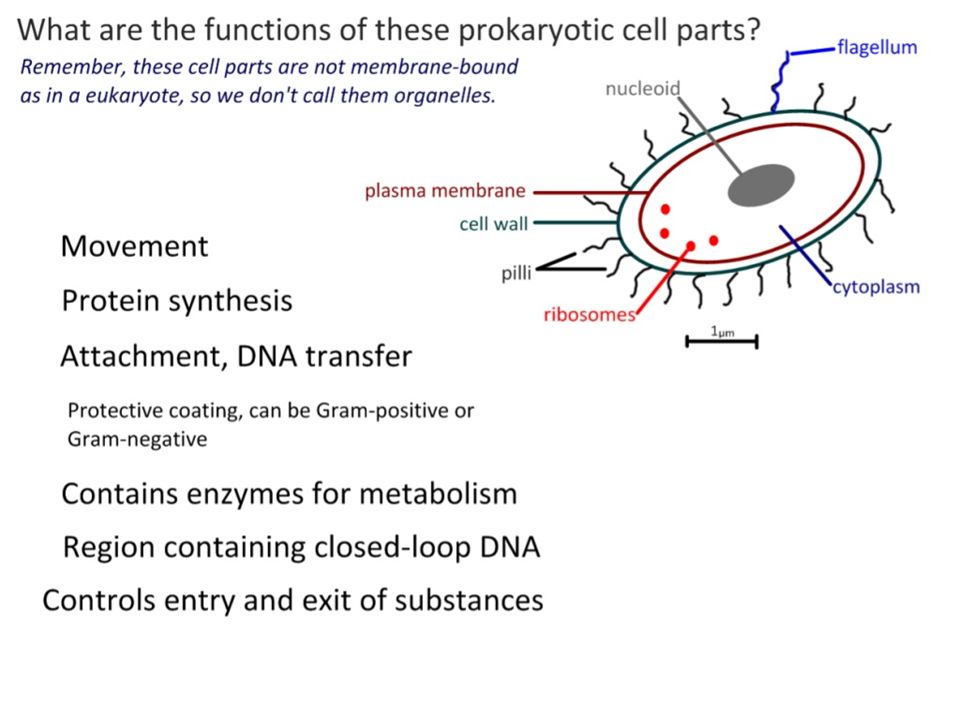


Draw And Label A Diagram Of The Ultrastructure Of Escherichia Coli E Ppt Download



Multilaboratory Validation Of Rapid Spot Tests For Identification Of Escherichia Coli Journal Of Clinical Microbiology


E Coli Chemotaxis
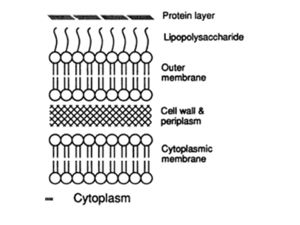


Targeting Of Proteins To Different Cellular Compartments In E Coli Microbewiki



One Step Production Of Aromatic Polyesters By E Coli Strains Eurekalert Science News
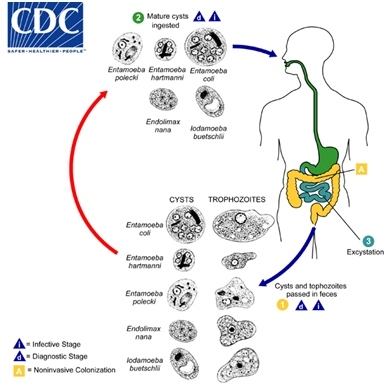


Entamoeba Coli Wikipedia



Drawing Of E Coli Google Search
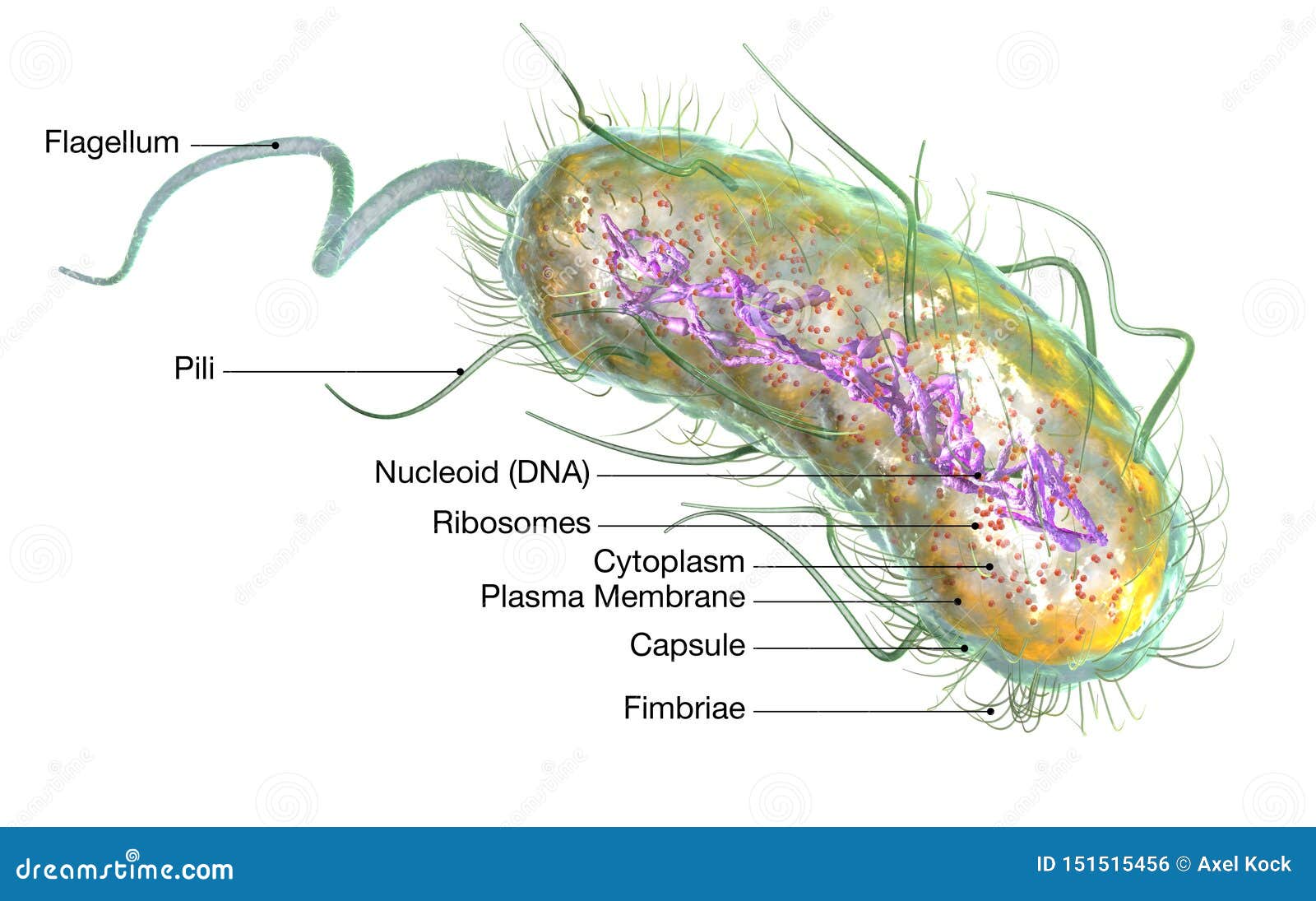


Escherichia Coli Bacteria E Coli Medically Accurate 3d Illustration Labeled Stock Illustration Illustration Of Biota Biology



Pathogens Free Full Text Meningitic Escherichia Coli Induction Of Angptl4 In Brain Microvascular Endothelial Cells Contributes To Blood Brain Barrier Disruption Via Arhgap5 Rhoa Myl5 Signaling Cascade Html
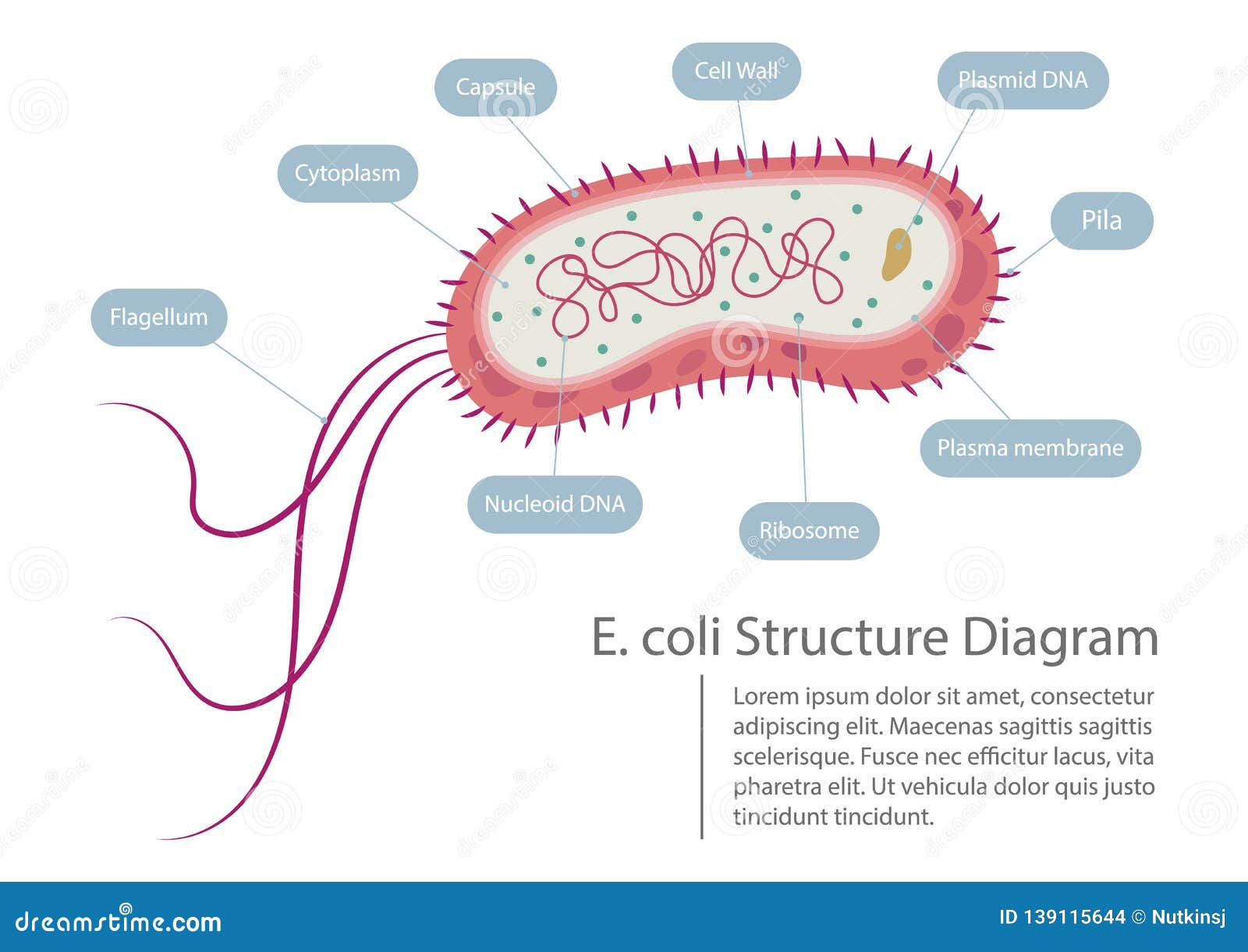


Escherichia Coli Structure Diagram Stock Vector Illustration Of Medical Diagram



Dissecting The Control Mechanisms For Dna Replication And Cell Division In E Coli Sciencedirect



Pathogenic E Coli Extracts Nutrients From Infected Host Cells Utilizing Injectisome Components Sciencedirect
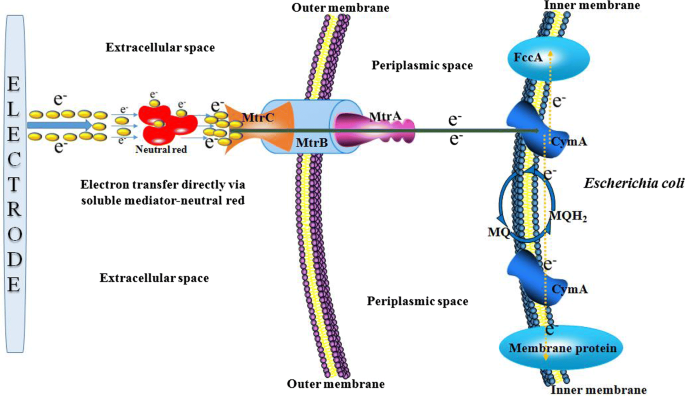


Engineering An Electroactive Escherichia Coli For The Microbial Electrosynthesis Of Succinate From Glucose And Co 2 Microbial Cell Factories Full Text



2 2 1 Draw And Label A Diagram Of The Ultrastructure Of Ecoli As An Example Of A Prokaryote Youtube


Pathogenesis Ecl The Escherichia Coli Laboratory


Evo Ed E Coli Cell Biology



Characterizing Strain Variation In Engineered E Coli Using A Multi Omics Based Workflow Cell Systems



Draw The Structure Of E Coli Label Those Structures Which Differentiate Them From Eukaryotic Cells Biology Cell The Unit Of Life Meritnation Com
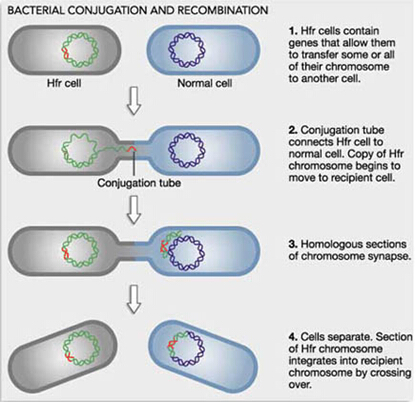


E Coli Antigens Creative Diagnostics
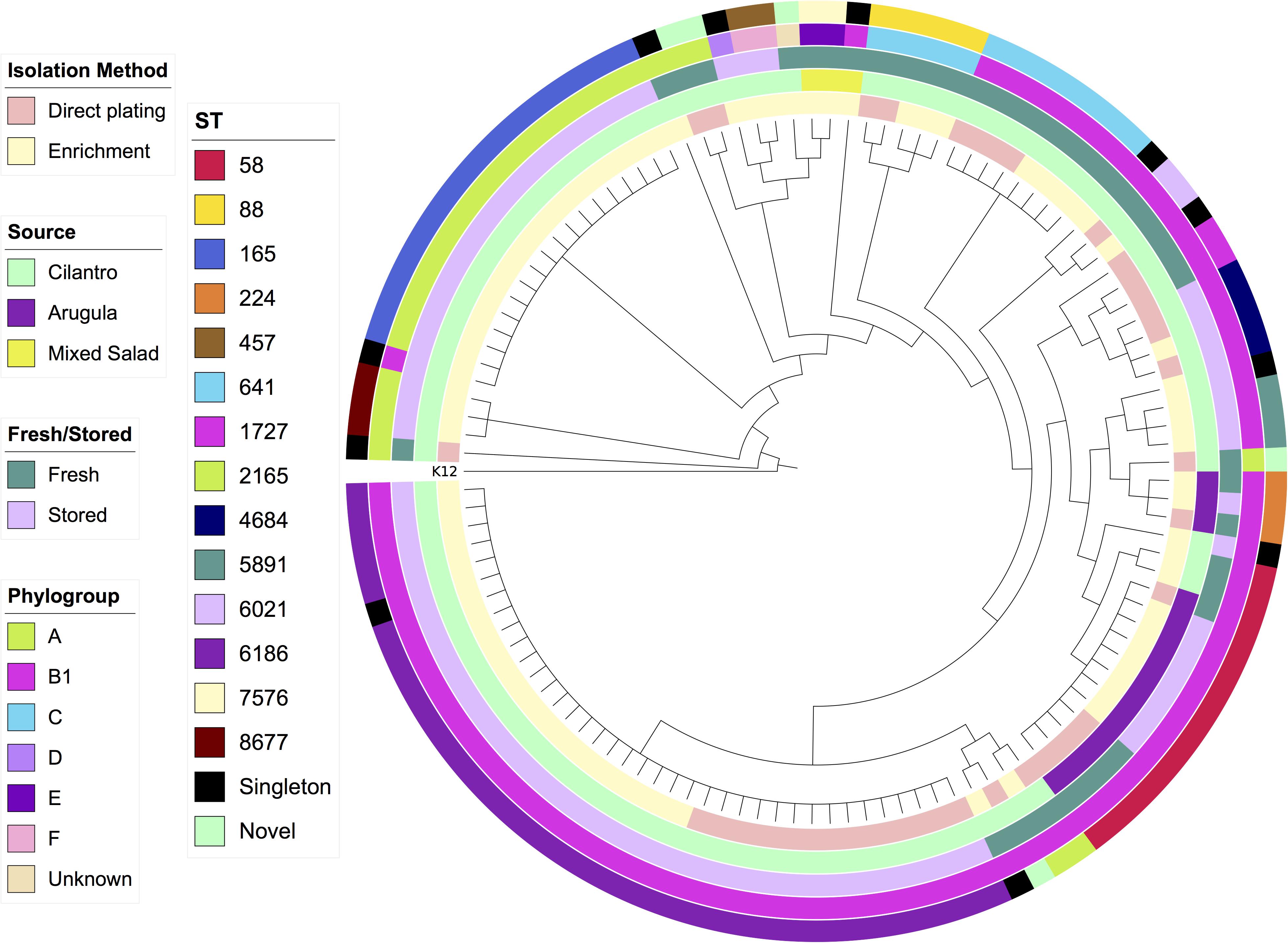


Frontiers Whole Genome Sequencing Of Escherichia Coli From Store Bought Produce Microbiology
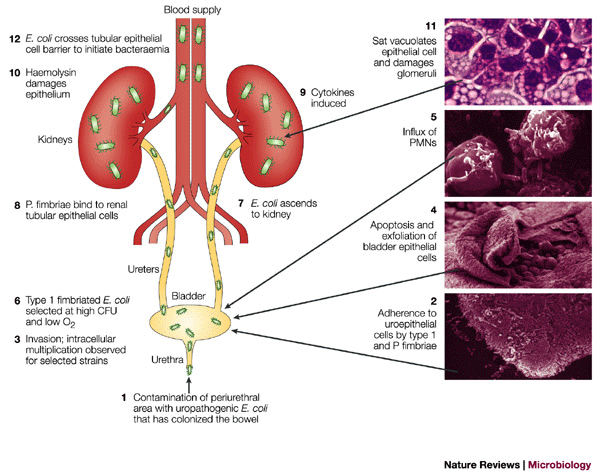


Pathogenic Escherichia Coli Nature Reviews Microbiology



Schematic Diagram Of E Coli O157 H7 Colonization On Host Cell A Download Scientific Diagram



The Structure Of Escherichia Coli Stock Illustration Download Image Now Istock
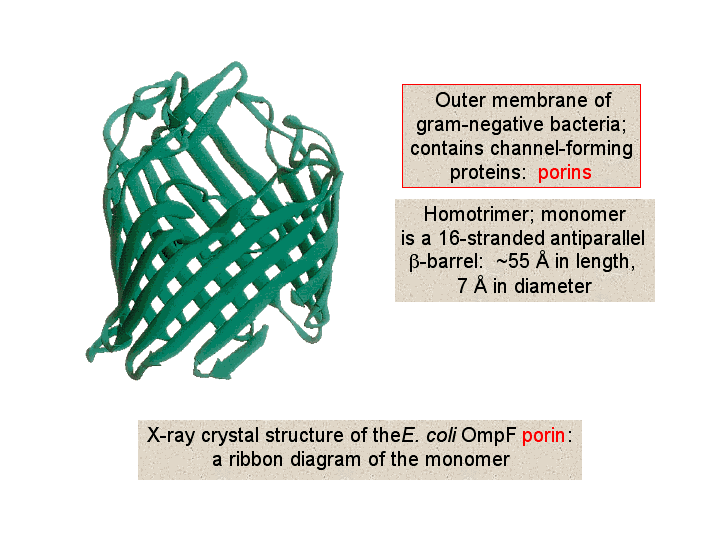


X Ray Crystal Structure Of The E Coli Ompf Porin A Ribbon Diagram Of The Monomer


Jhsph Ocw


Pathogenesis Ecl The Escherichia Coli Laboratory
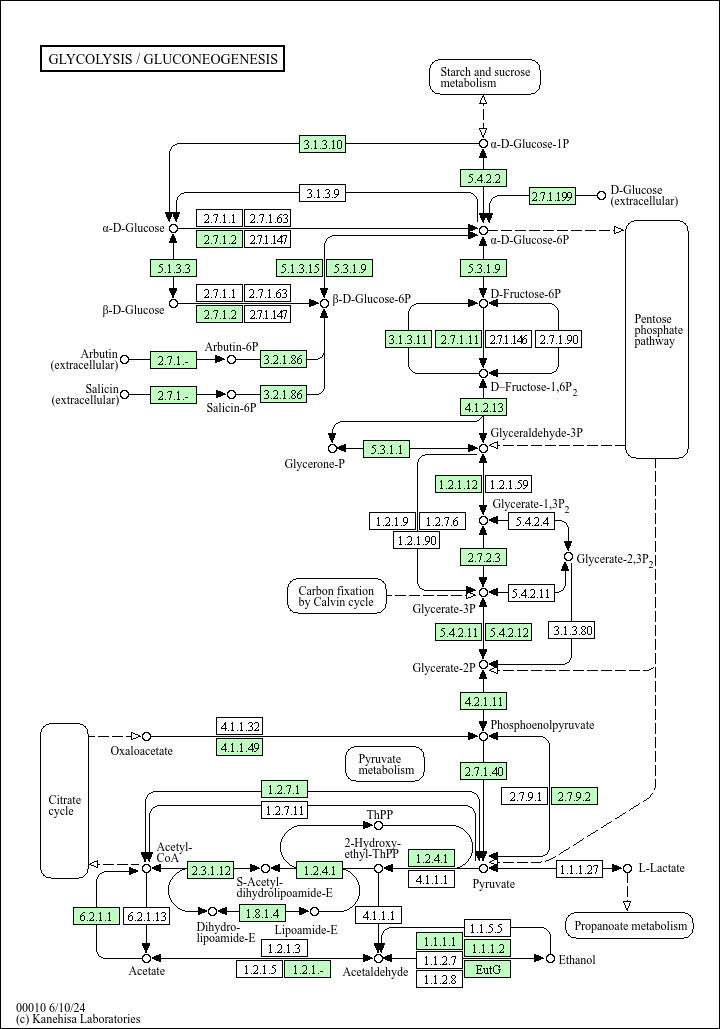


Kegg Pathway Glycolysis Gluconeogenesis Escherichia Coli K 12 Mg1655


コメント
コメントを投稿